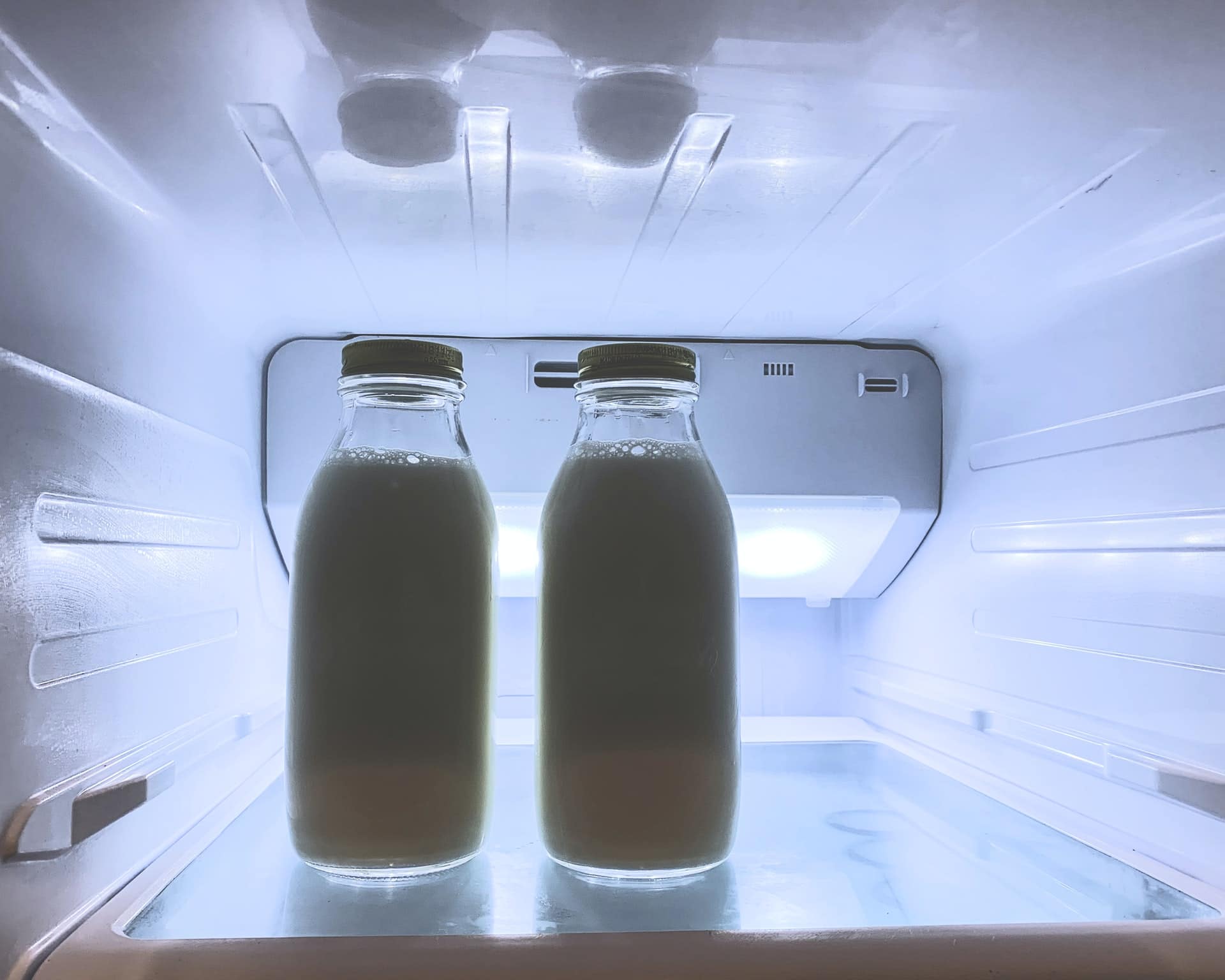If you love drinking fresh milk and you practice freezing milk to make it last longer, we’re sure you want to know how to thaw frozen cow milk. We are also sure that you have asked, on one occasion, “does freezing milk change the taste?” or “is frozen milk still good?” We are going to answer your questions and more in today’s Fresh Milk Blog.
Can you defrost frozen milk in the microwave?
Have you been thinking of how to defrost milk in the microwave? The problem with thawing out liquids in the microwave oven is that liquids can begin to cook before they are fully thawed out, so you will have a certain quantity of cooked milk and thawed milk mixed. This may not produce the right texture and taste that you are looking for in the first place, so it is probably best to avoid this technique altogether.
Another risk that comes with heating this much liquid in the microwave is that if you move the thawed out milk too quickly and the temperature is too high, the milk can explode, and this may even cause injuries. Defrosting milk in a microwave should be your last resort.
Thawing Methods for Frozen Milk
Now that we know that microwaving frozen milk isn’t the best idea, it’s time that we looked at other methods of defrosting or thawing frozen milk. A note of warning for people who have never frozen milk before: the resulting texture of defrosted milk is going to be different from what you have in the carton when you first buy the milk.
Full cream milk will show signs of separation, with the solids or fats separating from the liquid component of the milk. According to the California Dairy Council, skim milk fares better when frozen and thawed out compared to other kinds of milk. Full cream or whole milk has more fat in it so that it will experience more separation once frozen.
Thawing in the refrigerator
Frozen milk needs to be thawed out and consumed within three months for the best results. Thawing in the refrigerator takes time, so allow at least 24 hours for the milk to thaw completely.
Depending on the temperature setting of your freezer, some frozen milk may require days to thaw out (without the frozen core) completely. After thawing, shake the milk a little to reconstitute it and to encourage the milk to express the firmer texture that it had before freezing. Expect a little graininess when drinking the thawed out milk because the fat particles will be larger, and the milk will not be as homogenous as it was before you froze it.
Thawing with cold water
This is probably the fastest way to thaw frozen milk. You can thaw with water in a small tub or the sink (plug the drain). Fill the tub or sink with water and place the jug of frozen milk in the water.
Monitor the milk every 30 minutes to see if you can start pouring milk from the container. If the frozen milk hasn’t changed after 30 minutes, drain the water and refresh the tub or sink. Set the timer again for half an hour, and check once again if you can start pouring after half an hour. When the milk begins to thaw, be sure to shake the jug to encourage the milk to reconstitute and to bring back the old texture of the milk somehow.
After a few refreshes and you can get the milk that you need, feel free to place the jug back in the refrigerator to continue thawing it in a cold environment.
Unfortunately, it is not safe to thaw milk at room temperature. Most of the milk still has to thaw either in water or in the refrigerator. If you need to consume a large quantity of milk, you can use an electric mixer to bring back the previous texture and attributes of the milk. While this may not be a fool-proof plan, it will improve the texture somewhat.
Thawing human breast milk
In addition to whole milk from cows, you can also store human breast milk for a certain amount of time before it goes bad. Refrigerated breast milk kept in a temperature of 32˚-39˚ Fahrenheit (0˚-4˚ Celsius) can be kept for three to eight days maximum (but ideally, the milk should be consumed within 72 hours).
If the milk has been thawed from being frozen, it can be stored for just 24 hours before it begins to spoil. Since breast milk is given to infants, the quicker you feed it to your infant, the better. Freezing breast milk prolongs its viability for a maximum of two weeks if you are using a regular freezer compartment of a commercially-available refrigerator.
If you are using a self-contained freezer unit with a temperature of at least 39˚ Fahrenheit or <4˚ Celsius, the breast milk may remain viable for up to six months. Now, if you are going to use a separate deep freeze for the milk, and the temperature is 0˚ Fahrenheit or -18˚ Celsius, the breast milk will still be usable after six months to a year. Ideally, the milk should still be consumed within six months.
Thawing human breast milk is best done within the refrigerator. Thawing it at room temperature is out of the question. Feel free to thaw it also with water, just make sure that you monitor the milk every 30 minutes. You can eventually increase the temperature to thaw the milk more quickly. To warm the milk in preparation for feeding to an infant, pour warm water into a cup and place the bottle there. Gradually warm the milk, do not boil the milk or use any other heating method. This is the only method that is best suited for breast milk for feeding infants.

